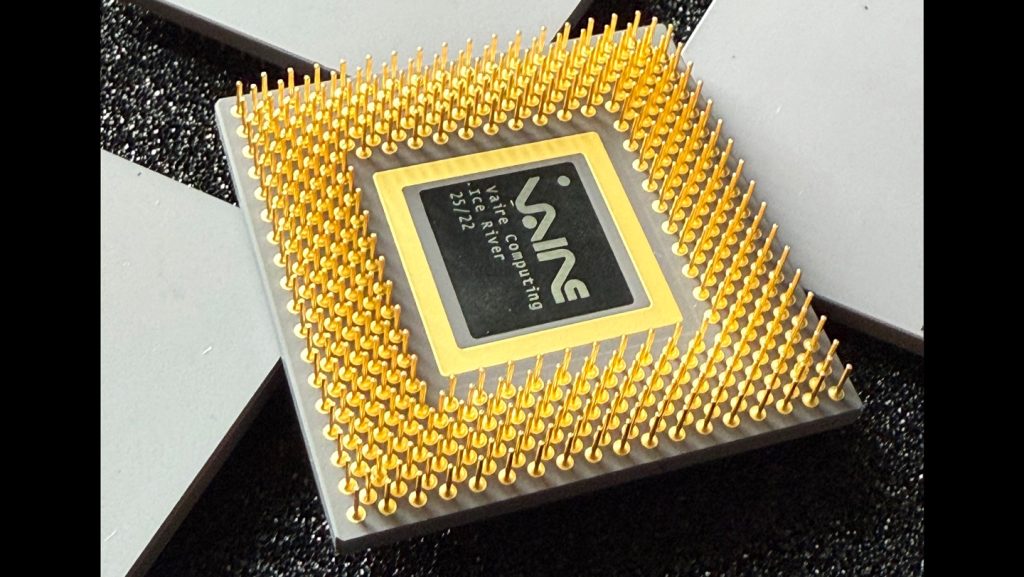Revolutionizing Computing with Energy-Recycling Chips
In an era where our digital footprint continues to expand exponentially, researchers have unveiled a groundbreaking computer chip that could transform how we think about energy consumption in technology. Known as Ice River, this experimental chip developed by London-based Vaire Computing represents a significant leap forward in sustainable computing by reusing the electrical energy it consumes rather than allowing it to dissipate as waste heat.
The traditional computing paradigm has always accepted energy waste as an inevitable cost of processing power. When your phone or laptop heats up during intensive tasks, you’re experiencing firsthand the inefficiency of conventional chips, which consume electricity once before discarding it entirely as heat. This fundamental limitation has significant environmental implications, especially as artificial intelligence applications demand increasingly powerful computer chips that consume far more electricity than their predecessors. As Michael Frank, a scientist at Vaire Computing explains, conventional devices simply “use energy once and then throw it away,” contributing to rising environmental and energy costs as technology proliferates across global data centers that require massive cooling systems and power supplies.
The Ice River chip, tested in August, demonstrates remarkable efficiency gains by consuming approximately 30 percent less energy than conventional chips performing identical computations. This achievement stems from the chip’s ability to recycle a portion of its electrical energy instead of converting it entirely to waste heat. Aatmesh Shrivastava, a computer engineer at Northeastern University in Boston, describes this breakthrough as “quite exciting,” noting that energy recovery represents a universal aspiration in computing system design. The achievement is particularly noteworthy as computing demands continue to grow globally, with data centers consuming increasing amounts of water and electricity for cooling and operation.
The innovation behind Ice River emerges from reimagining two inefficient features inherent in modern computer architecture. First, the chip employs reversible logic, a radical departure from conventional chip design where information processing occurs unidirectionally and original data is erased during computation, generating heat. By contrast, Ice River’s architecture allows it to “un-compute” and recover original information, avoiding the heat losses typically associated with data erasures. Second, the chip replaces the conventional power delivery approach—which Frank likens to a hammer forcefully converting bits between states—with adiabatic computing, where voltages gradually rise and fall. This gentler approach, more comparable to a pendulum than a hammer, allows energy to “slosh back and forth” and be partially reused in subsequent operations. Crucially, the power supply managing this pendulum-like energy flow is integrated directly on the chip itself.
While the theoretical foundations for such energy-efficient computing have existed since the 1960s, with early test systems demonstrating reversible logic in the 1990s at MIT, Ice River represents the first physical chip to successfully integrate both reversible logic and an on-board pendulum-like power supply. According to Frank, combining these two innovations is essential for meaningful energy reuse, as implementing just one or the other would not yield significant efficiency gains. The August test marked a pivotal moment for the technology, transforming it from theoretical simulations and paper sketches into a working reality. Hannah Earley, Vaire’s cofounder, expressed her excitement at seeing the chip function in real life after extensive theoretical development.
Industry experts recognize the significance of Vaire’s achievement. Erik DeBenedictis, who leads computing company Zettaflops in Albuquerque, notes that Vaire has advanced closer to creating a practically useful reversible chip than any previous attempt. However, substantial challenges remain before this technology can achieve mainstream adoption. Shrivastava cautions that adiabatic computing’s inherently slower processing speed represents a significant obstacle. While the reduced heat generation allows for denser chip arrangements to compensate for slower speeds, this approach increases manufacturing costs. To achieve commercial viability, Vaire must develop strategies for effective scaling and improved energy reuse efficiency. As DeBenedictis observes, “They have a challenge ahead of them,” but the potential rewards—dramatically more efficient computing in an increasingly digital world—make this pursuit worthwhile.
In a world increasingly concerned with sustainability and energy efficiency, Ice River represents a promising pathway toward computing systems that could significantly reduce the environmental impact of our digital infrastructure while potentially extending battery life in portable devices and reducing operational costs in data centers. Although challenges remain on the path to commercialization, this breakthrough demonstrates that fundamental rethinking of computer architecture can yield substantial benefits in our ongoing quest for more sustainable technology.















